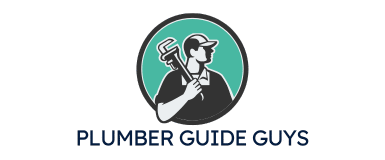Plumbing Repairs and Solutions: Your Complete Resource Guide
Welcome to your comprehensive resource for plumbing repairs and solutions. Whether you’re facing a dripping faucet, clogged drain, or a full-blown plumbing emergency, our guide provides practical fixes, step-by-step troubleshooting, and expert advice for resolving common and complex plumbing issues. From DIY repairs to knowing when to call professionals, we’ve organized everything you need to maintain your home’s plumbing system and handle unexpected problems with confidence.
Navigate Your Plumbing Needs
Find specific solutions or explore our complete resource collection
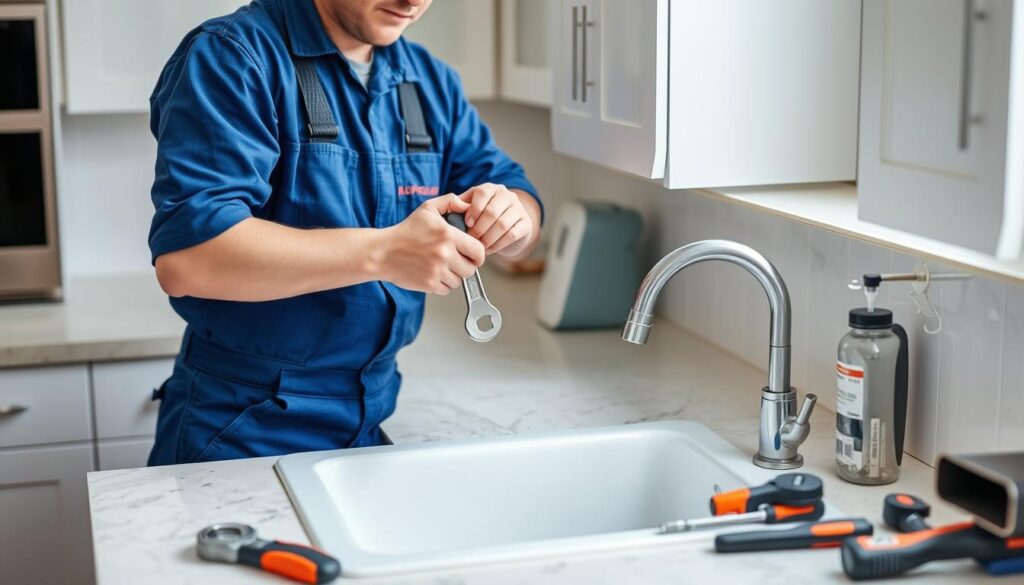
Finding the Right Plumbing Solutions for Every Situation
Plumbing problems rarely happen at convenient times. Whether it’s a weekend, holiday, or middle of the night, our resources help you address issues promptly and effectively. From emergency repairs to routine maintenance, we’ve organized our plumbing guides into practical categories to help you quickly find exactly what you need.
Our comprehensive collection covers everything from basic DIY fixes to understanding when professional help is necessary. Each section provides detailed instructions, helpful tips, and expert insights to ensure your plumbing system remains in optimal condition year-round.
Browse through our subcategories below to find specific solutions for your plumbing needs, or use our search feature to locate particular topics. Our goal is to empower you with the knowledge and resources to handle plumbing challenges confidently and effectively.
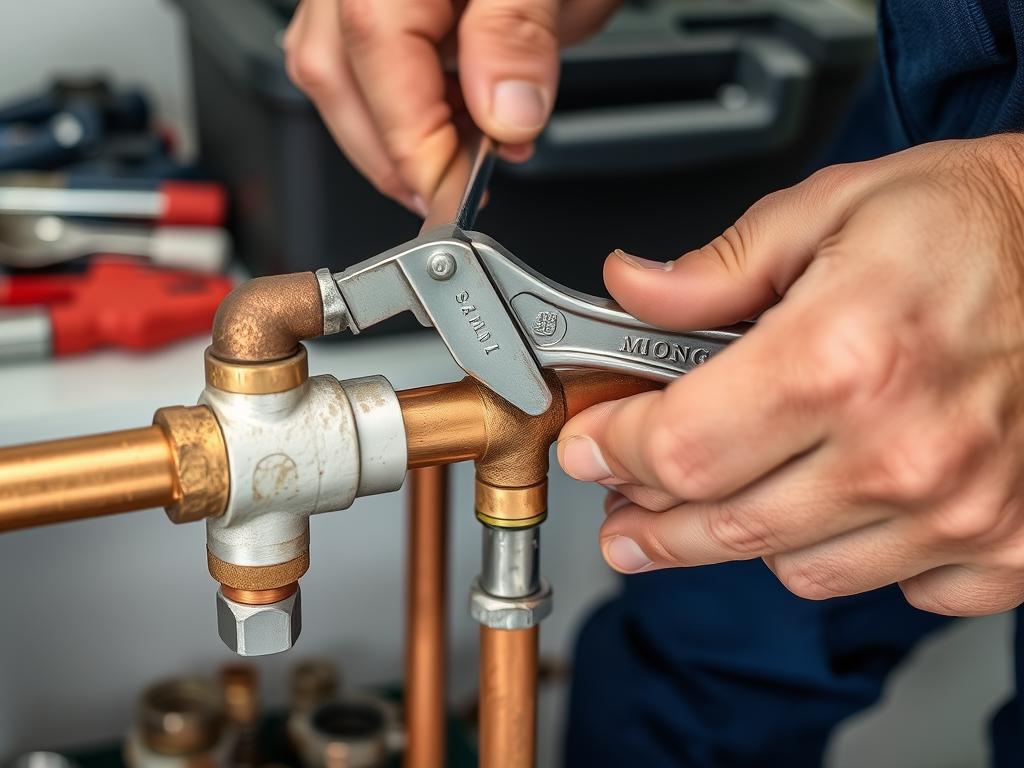
Plumbing Repair & Maintenance
Keep your plumbing system running smoothly with our comprehensive repair and maintenance guides. From fixing leaky faucets to preventing pipe damage, these resources help you address common issues before they become costly emergencies.
- Step-by-step repair tutorials for common plumbing problems
- Seasonal maintenance checklists to prevent future issues
- Troubleshooting guides for identifying plumbing problems
- Water conservation tips and efficiency improvements
- Professional maintenance schedules and recommendations
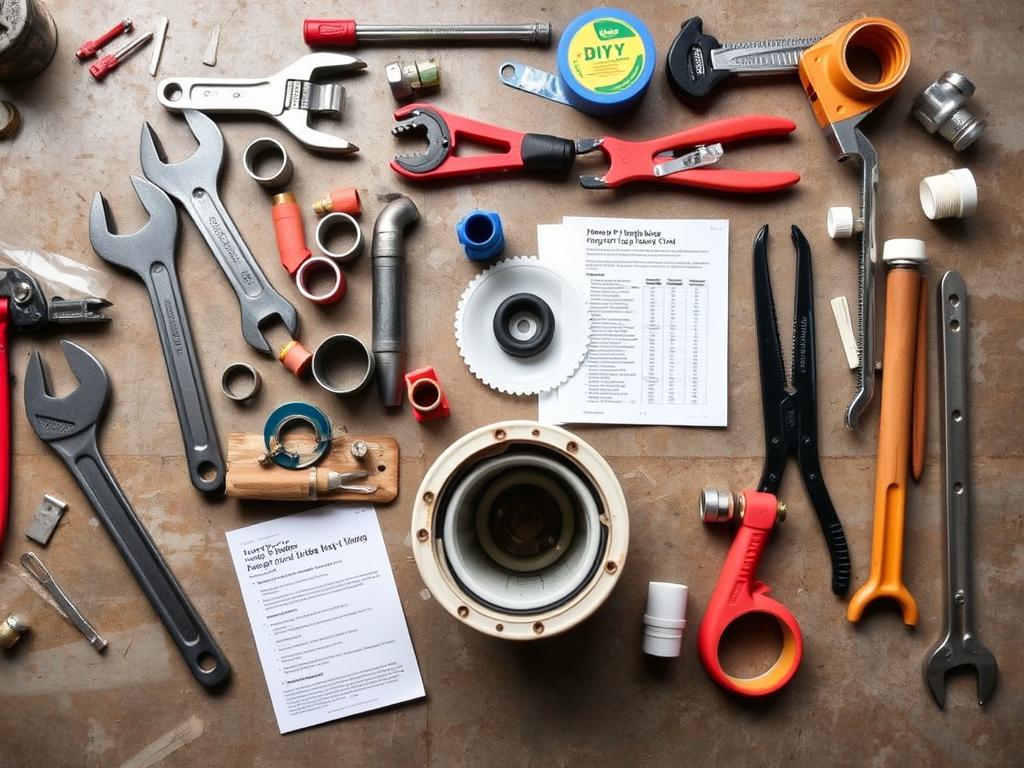
Plumbing Methods & DIY Guides
Tackle plumbing projects yourself with our detailed DIY guides and expert methods. Learn professional techniques that save money while ensuring quality repairs for your home’s plumbing system.
- Beginner-friendly plumbing repair tutorials
- Tool guides and essential equipment recommendations
- Material selection advice for different plumbing applications
- Illustrated step-by-step installation procedures
- Safety protocols for DIY plumbing work
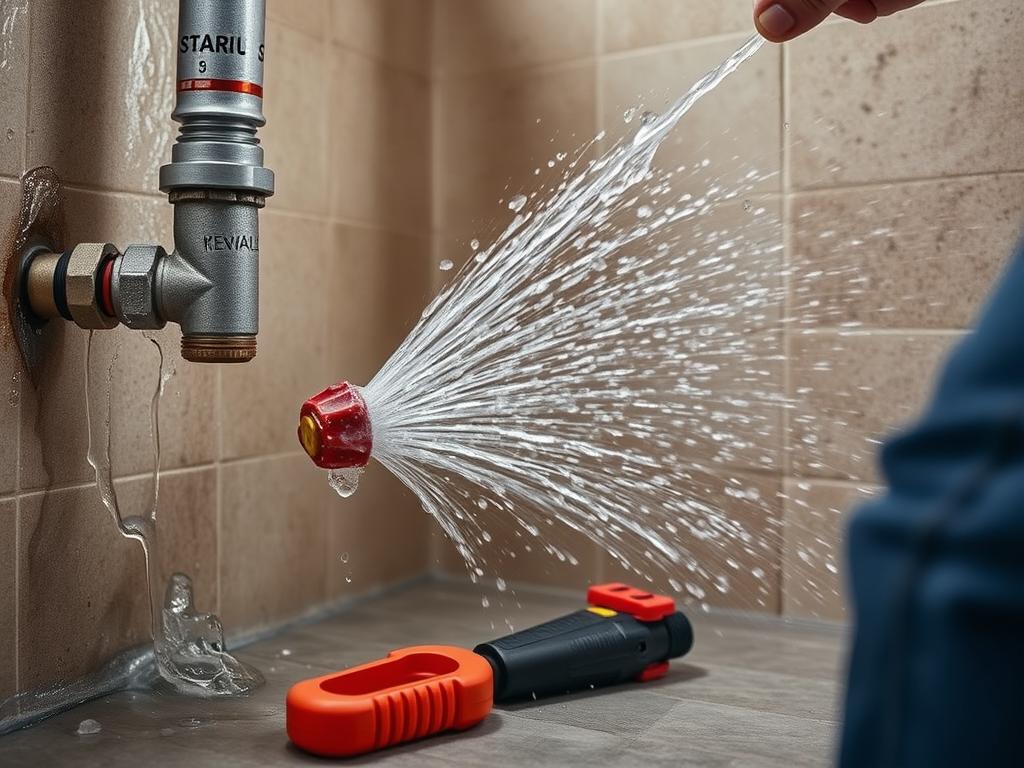
Plumbing Emergencies
When disaster strikes, quick action is essential. Our emergency plumbing resources provide immediate solutions for urgent situations like burst pipes, major leaks, and sewer backups to minimize damage to your home.
- Emergency response protocols for different plumbing disasters
- Water shutoff procedures to minimize damage
- Temporary repair solutions until professional help arrives
- Emergency plumber contact preparation
- Water damage mitigation techniques
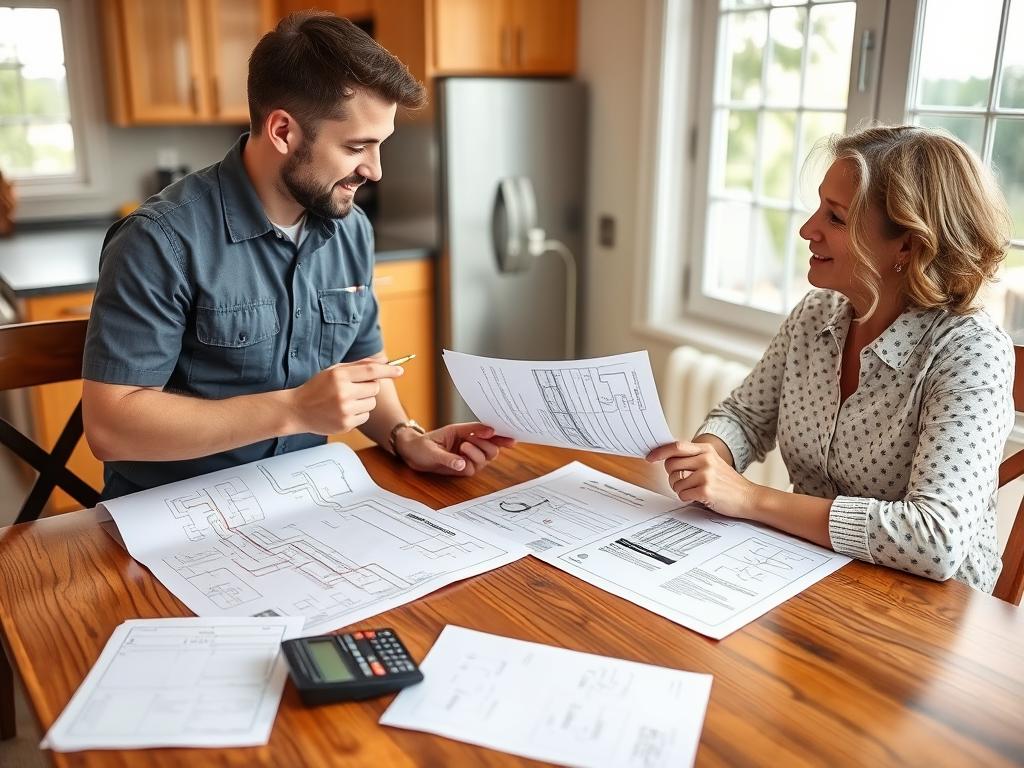
Plumbing Planning, Quotes & Negotiation
Get the best value for your plumbing projects with our comprehensive planning and negotiation resources. Learn how to evaluate quotes, understand pricing, and effectively communicate with plumbing professionals.
- Quote comparison worksheets and evaluation guides
- Cost breakdown explanations for common plumbing services
- Negotiation strategies for fair pricing
- Project planning timelines and checklists
- Questions to ask potential plumbing contractors
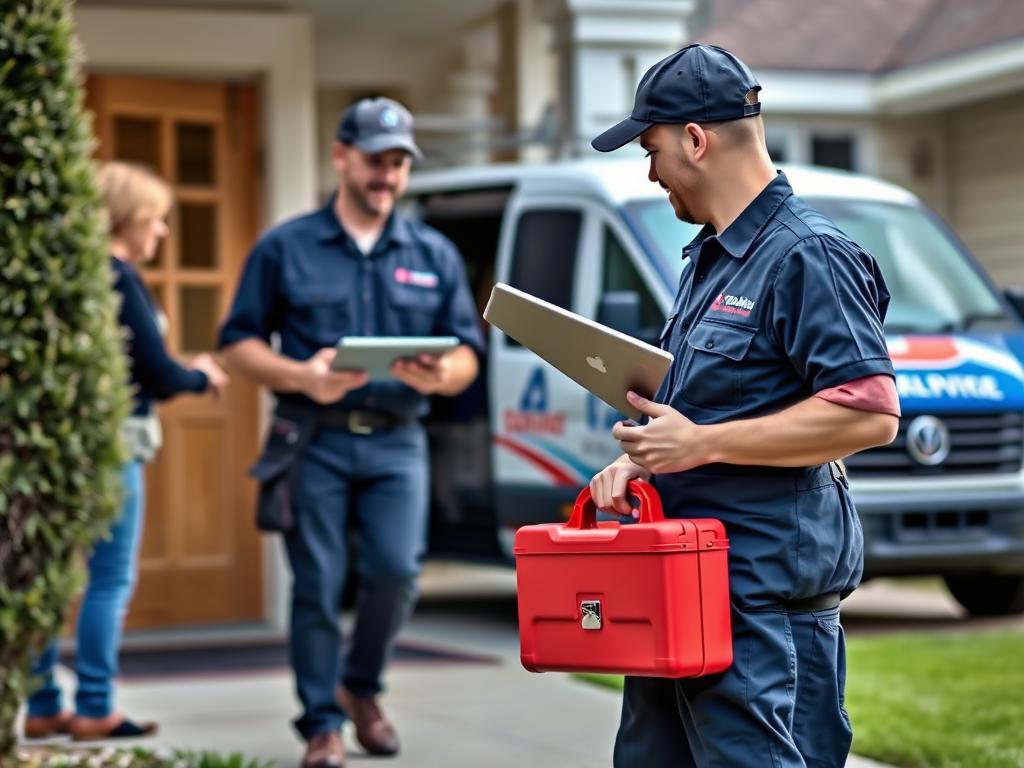
Plumbing Work Hours, Scheduling & Clothing
Understand the practical aspects of working with plumbing professionals, from typical service hours to preparation for plumbing work in your home. These guides help ensure smooth, efficient service experiences.
- Typical plumbing service hours and availability expectations
- Home preparation checklists for plumbing service visits
- Scheduling tips for routine vs. emergency services
- What to wear when doing DIY plumbing work
- Understanding service time estimates and timeframes
Common Plumbing Issues & Their Solutions
Many households face similar plumbing challenges. Below are some of the most frequent issues and quick guidance on addressing them effectively. For detailed solutions, explore our specific subcategory guides.
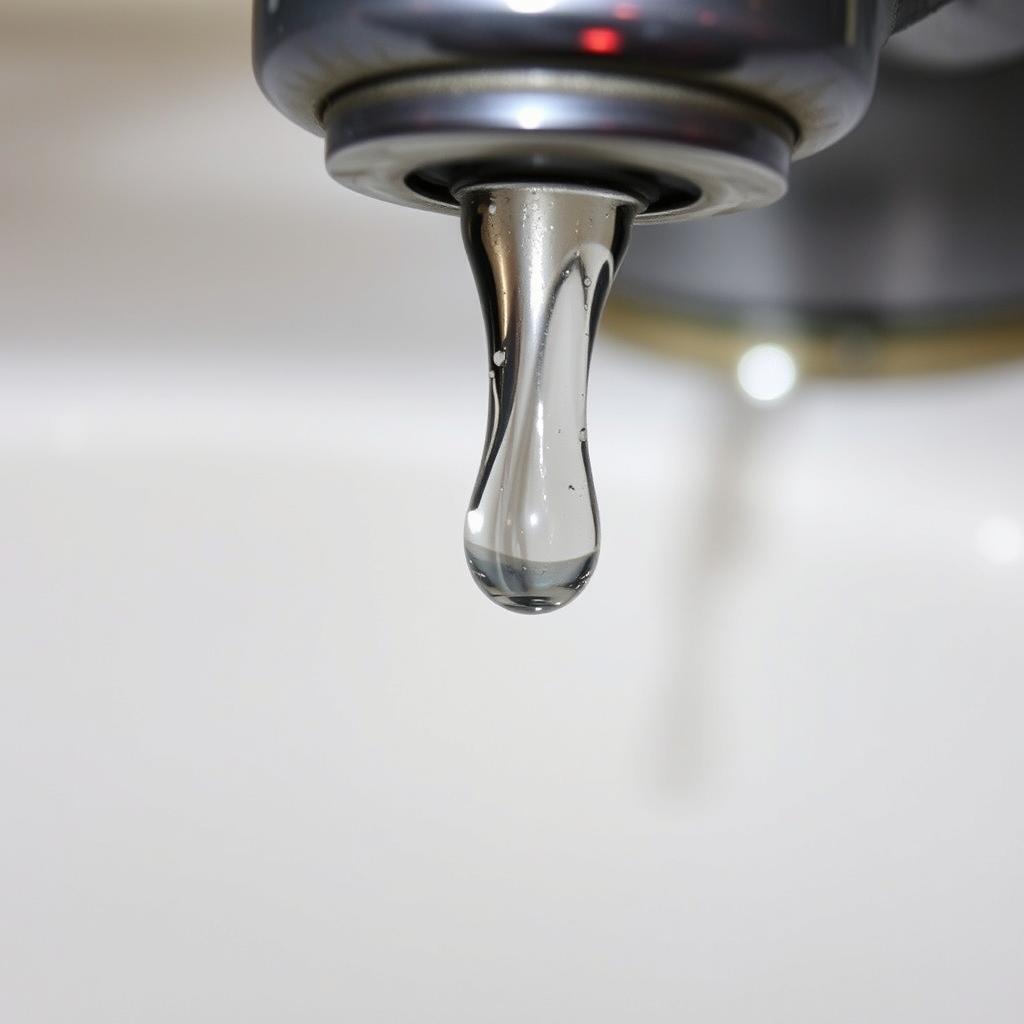
Leaky Faucets
Beyond the annoying drip, leaky faucets waste water and increase utility bills. Usually caused by worn washers or O-rings that need replacement.
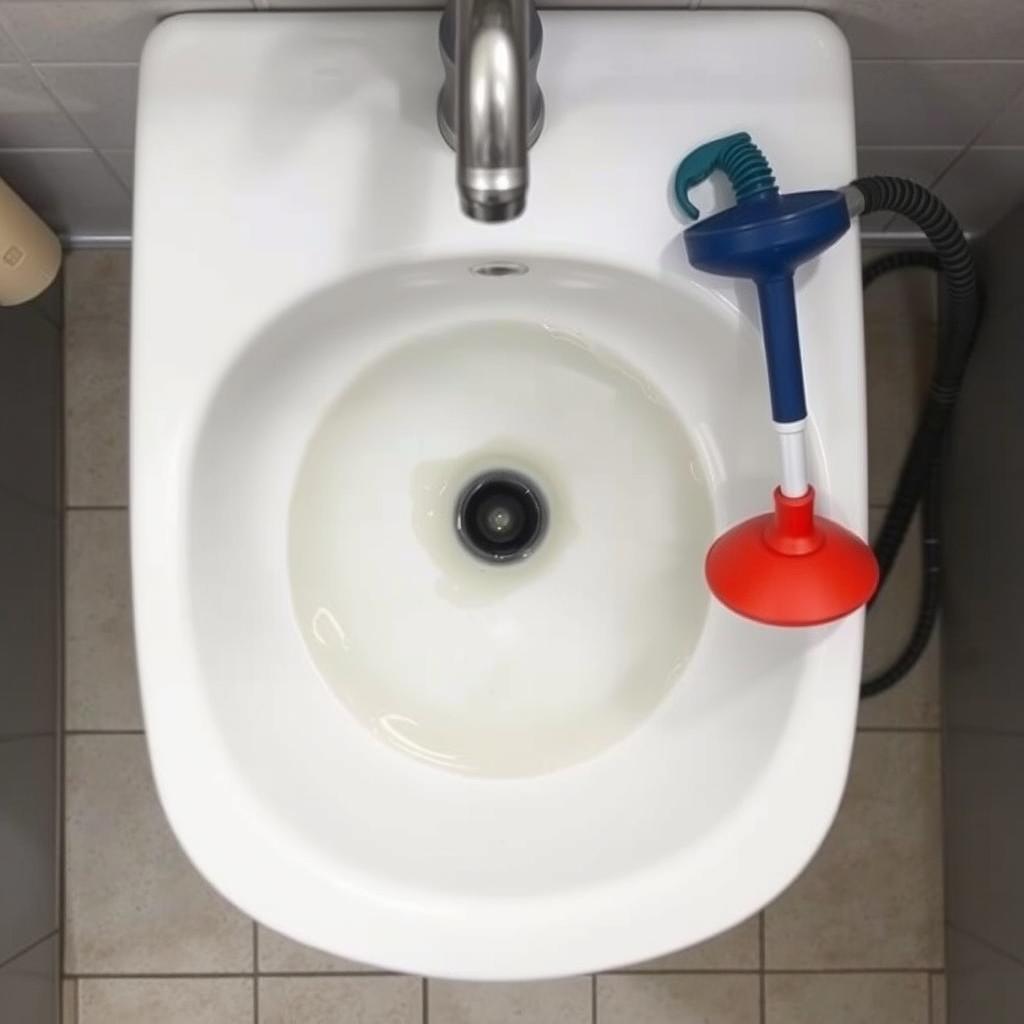
Clogged Drains
Slow or stopped drains indicate blockages from hair, soap, grease, or foreign objects. Solutions range from simple plunging to professional drain cleaning.
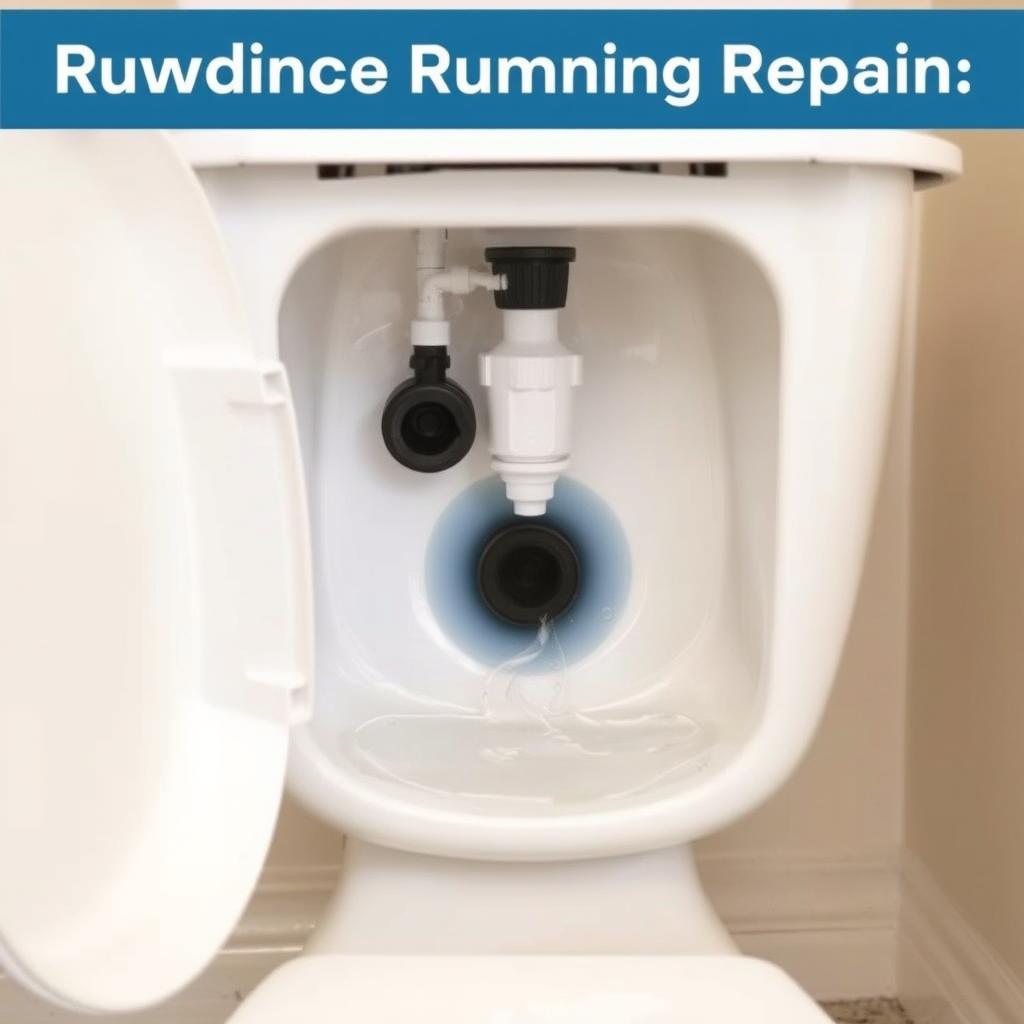
Running Toilets
Toilets that won’t stop running waste gallons of water daily. Usually caused by faulty flappers, fill valves, or flush valves that need adjustment or replacement.
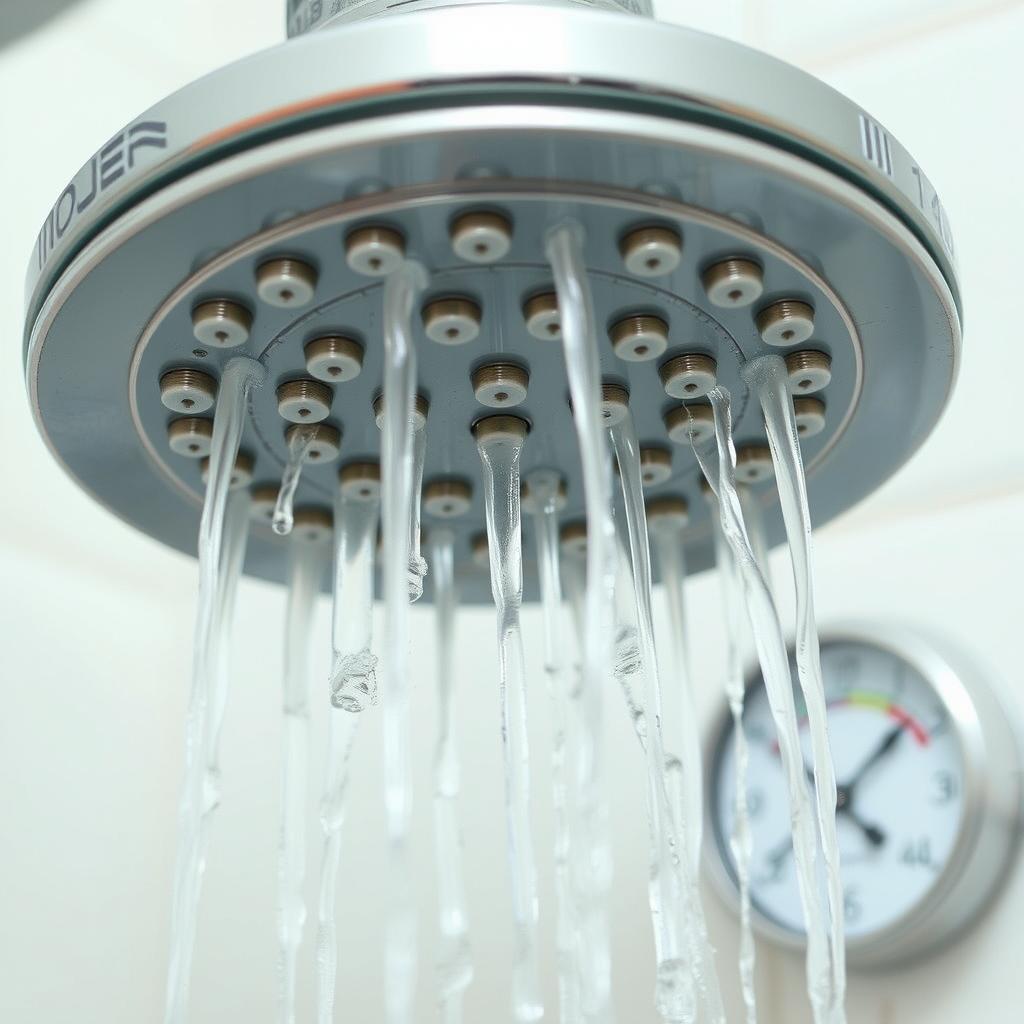
Low Water Pressure
Reduced flow from fixtures may indicate pipe corrosion, leaks, or mineral buildup. Solutions range from cleaning aerators to repiping in severe cases.
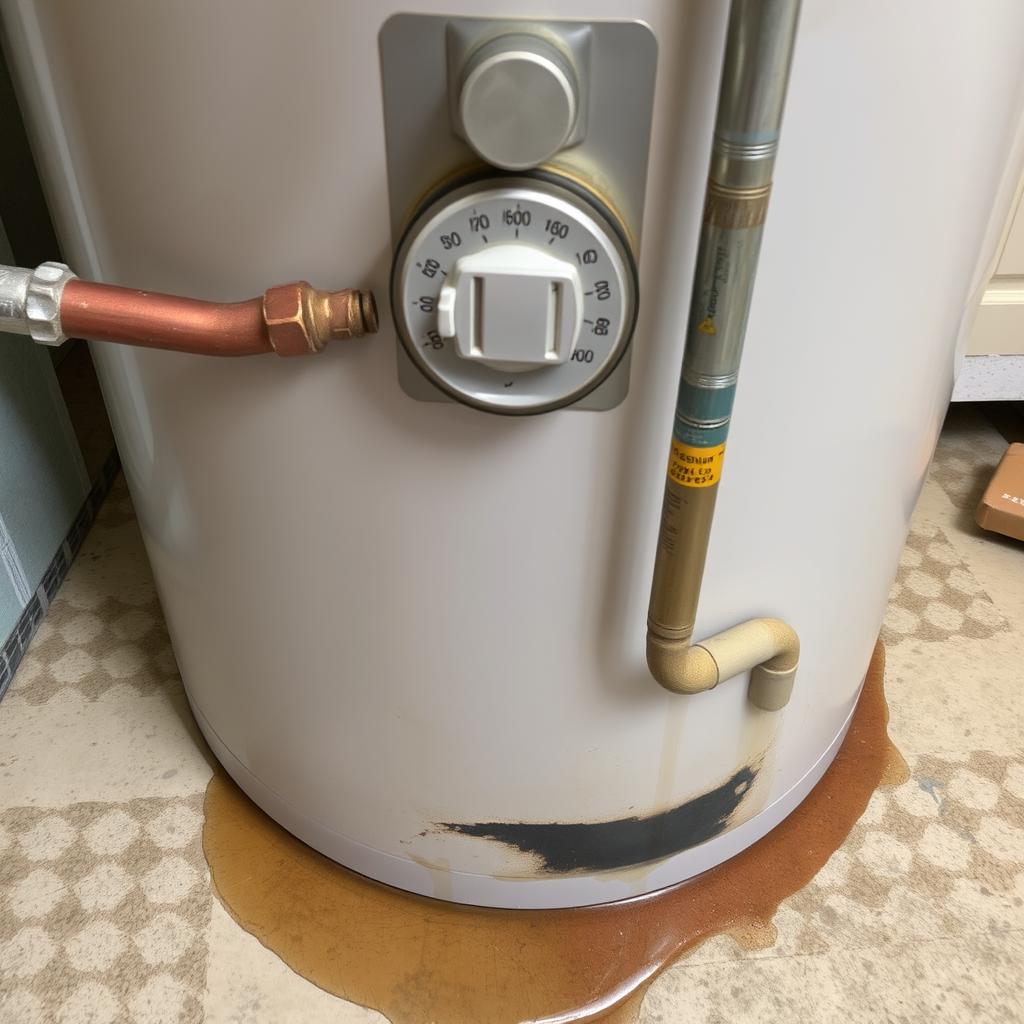
Water Heater Issues
Cold showers, strange noises, or leaks indicate water heater problems. Regular maintenance prevents sediment buildup and extends unit lifespan.
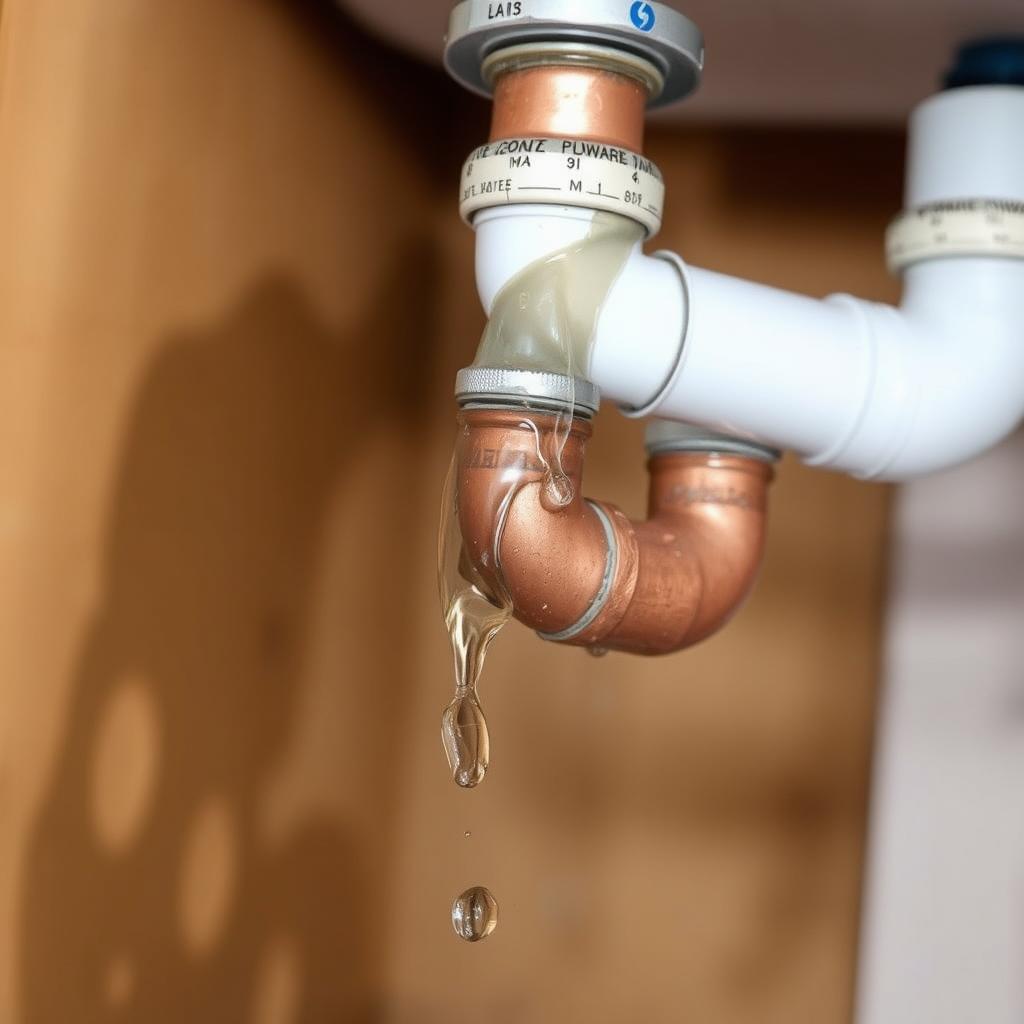
Pipe Leaks
Leaking pipes can cause significant water damage. Early detection through regular inspection helps prevent major repairs and property damage.
Seasonal Plumbing Maintenance
Different seasons bring unique challenges to your plumbing system. Proactive maintenance helps prevent common seasonal issues and extends the life of your plumbing components.
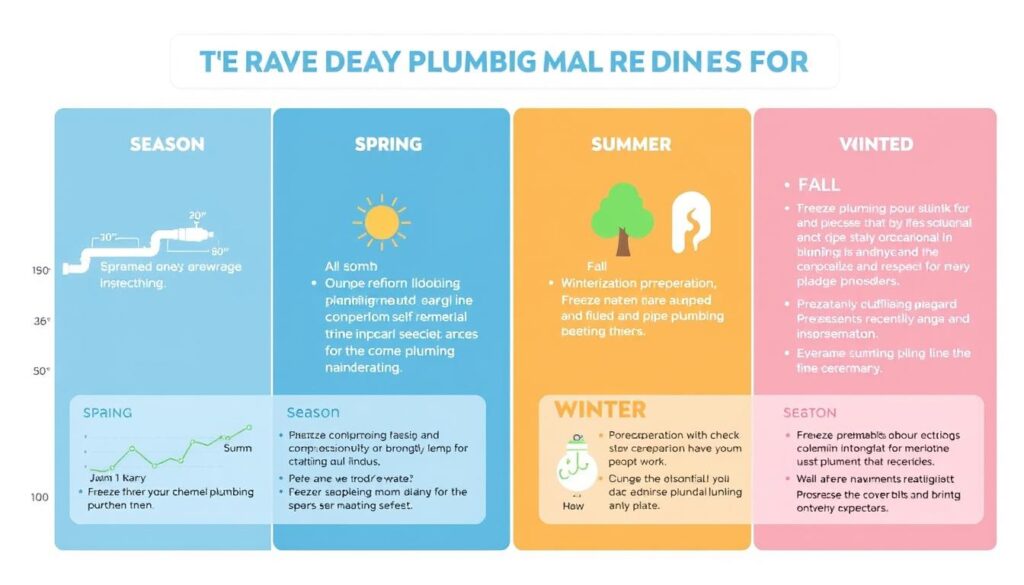
Spring
- Check for winter pipe damage
- Clean gutters and downspouts
- Inspect outdoor faucets
- Test sump pump operation
Summer
- Check sprinkler systems
- Inspect washing machine hoses
- Clear slow-draining sinks
- Check toilet components
Fall
- Disconnect garden hoses
- Insulate exposed pipes
- Clean water heater
- Check for leaks before winter
Winter
- Keep cabinet doors open
- Allow faucets to drip in freezing temps
- Maintain consistent heating
- Know location of main water shutoff
When to DIY vs. When to Call a Professional
Safe for DIY Repairs
- Unclogging simple sink or shower drains
- Replacing faucet washers and aerators
- Installing new shower heads
- Fixing running toilets
- Replacing toilet flappers or fill valves
- Cleaning drain stoppers
- Tightening loose connections
Call a Professional
- Main sewer line clogs or backups
- Water heater repairs or replacement
- Pipe replacements or rerouting
- Gas line issues of any kind
- Persistent low water pressure
- Major leaks or flooding situations
- Installing new plumbing fixtures
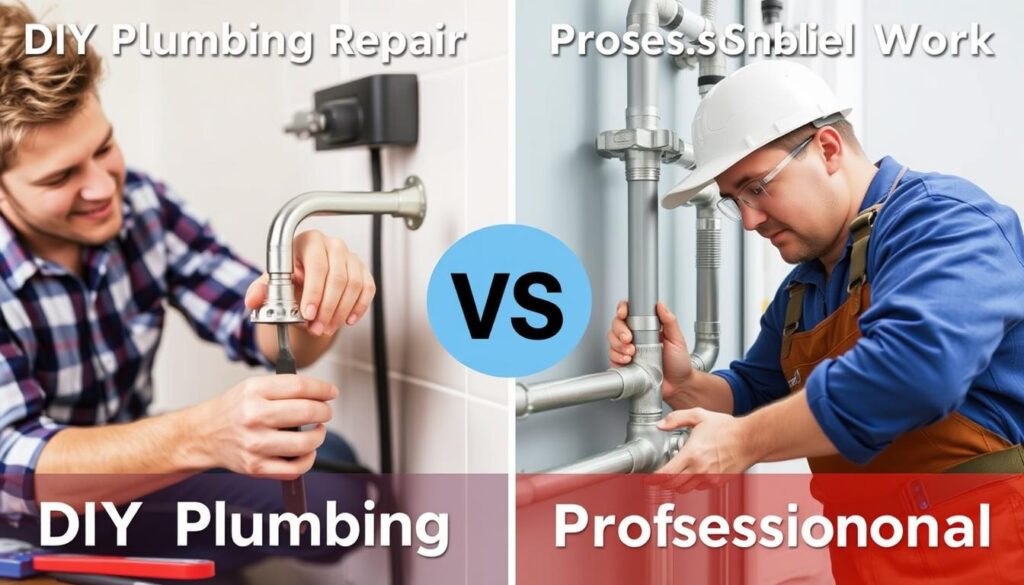
Essential Plumbing Tools for Homeowners
Having the right tools on hand makes addressing minor plumbing issues much easier. Here’s a collection of must-have tools for basic plumbing repairs and maintenance
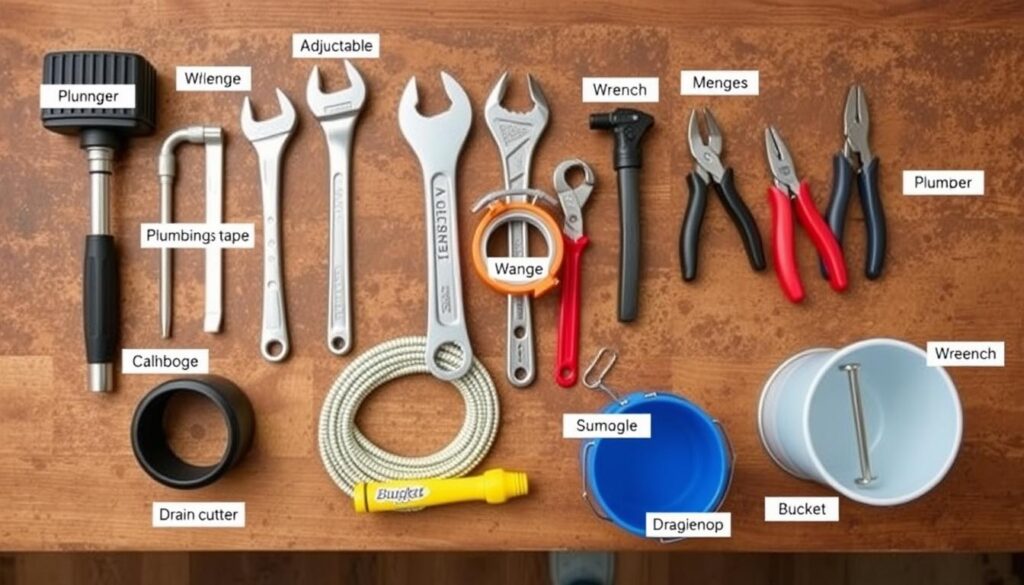
Basic Tools
- Plunger (cup and flange types)
- Adjustable wrench
- Pipe wrench
- Channel-lock pliers
- Plumber's tape
Specialized Tools
- Basin wrench
- Drain snake/auger
- Pipe cutter
- Plumber's putty
- Pipe joint compound
Safety Equipment
- Rubber gloves
- Safety glasses
- Bucket for water collection
- Towels and rags
- Flashlight
“The right tool makes any plumbing job easier. Investing in quality basic plumbing tools can save hundreds in emergency service calls for simple fixes.”
— Professional Plumber with 20+ Years Experience
Preparing for Plumbing Emergencies
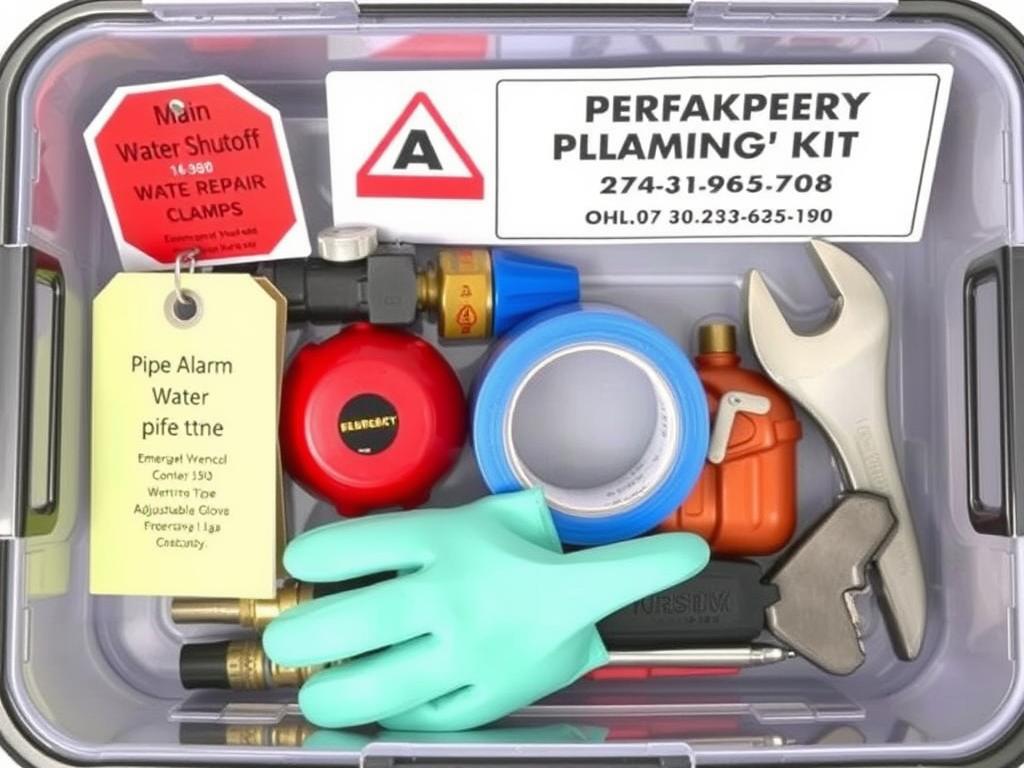
Know Your Home's Plumbing
- Locate main water shutoff valve
- Find individual fixture shutoffs
- Know your water heater controls
- Identify your main sewer cleanout
- Map key plumbing access points
Emergency Kit Essentials
- Water leak detection alarms
- Pipe repair clamps for temporary fixes
- Rubber sheets and repair tape
- Bucket and towels for containment
- List of emergency plumber contacts
Quick Response Checklist
- Shut off water at the source (fixture valve or main)
- Drain affected pipes by opening faucets
- Clean up standing water to prevent damage
- Document the damage with photos (for insurance)
- Call a professional if the issue exceeds DIY capabilities
Frequently Asked Questions
How often should I check my home’s plumbing system?
What’s the most common DIY plumbing mistake to avoid?
How can I prevent frozen pipes in winter?
